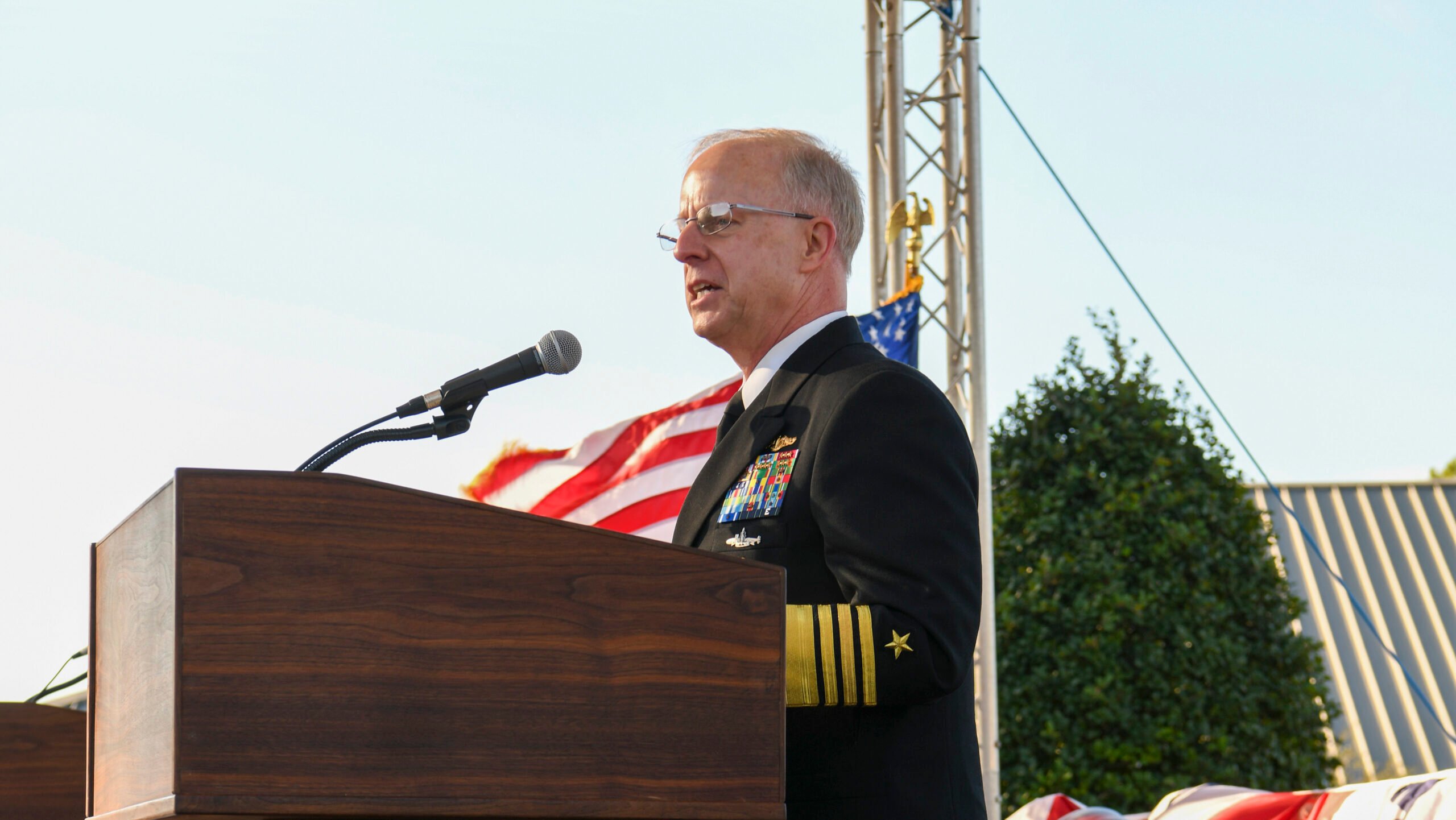
Adm. Daryl Caudle, Commander, U.S. Fleet Forces Command, gives a speech during the Nuclear Power School (NPS) class 2206 graduation ceremony at Naval Nuclear Power Training Command (NNPTC), Charleston, Jan. 20, 2023. (U.S. Navy photo by Mass Communication Specialist 2nd Class Dartañon D. De La Garza/Released)
SNA 2024 — Last year in a speech here, Adm. Daryl Caudle sent a shot across industry’s bow: The Navy needs ordnance; not excuses. This year, he gave industry credit for stepping up and conceded his previous remarks might’ve been a bit too aggressive.
“I probably overstated some things and got educated on some things, and I think they understood that we need these weapons,” Caudle told a group of reporters on Tuesday morning prior to his remarks at this year’s Surface Navy Association’s annual symposium.
Caudle, the four-star officer in charge of US Fleet Forces Command, drew headlines this time last year for his unusually blunt remarks towards industry during SNA, a routine Washington, DC, trade show that regularly attracts top Navy brass, including the chief of naval operations and the service secretary, as well as industry titans.
RELATED: ‘I Just Don’t Really Care’: Navy Admiral Warns Industry To Deliver More Ordnance, Fewer Excuses
“I am not forgiving of the fact they’re not delivering the ordnance we need,” Caudle said in 2023. “All this stuff about COVID this, parts, supply chain — I just don’t really care.”
“We’ve all got tough jobs,” he added to audience applause. “I need SM-6 [missiles] delivered on time. I need Mk-48 torpedoes delivered on time.”
The impetus for the warning shot, he said today, was the sense that some in industry may have been leaning in on the problems caused by the coronavirus pandemic and resulting supply chain shortages as an excuse to not produce ammunition at the rate the service needed.
“I wanted to get some reaction from folks and say, ‘Hey, you know, those things are true, but what is it that we should be able to do to kind of compensate for that?’” he said. In the intervening time, Caudle said he was able to work with Vice Adm. Frank Morley, the uniformed advisor to the service’s civilian acquisition executive, to meet with industry executives responsible for producing the service’s missiles, torpedoes and other ammunition.
The result was the Navy and industry were able to improve the production process.
“How we as the Navy work with them to do quality control test. How many test stands and things like that, that they have. Test equipment improvements that need to be done. How many times they had to hand off the component before it actually gets to the final assembly,” Caudle said.
While Caudle’s remarks last year were driven in part by the conflict taking place in Ukraine and the aide being sent by the US, the Pentagon’s — and particularly the Navy’s need — for ordnance has not decreased in the wake of Oct. 7 attacks on Israel.
According to the senior US Navy officer in the region, Navy surface forces have shot down or intercepted dozens of missiles and drones launched by Iran-backed Houthi rebels. More recently, they’re now also contending with unmanned surface vessels “packed with explosives.”
RELATED: ‘Packed With Explosives’: Houthis Launch Unmanned Vessel In Red Sea, Fail To Strike Ships, US Says








